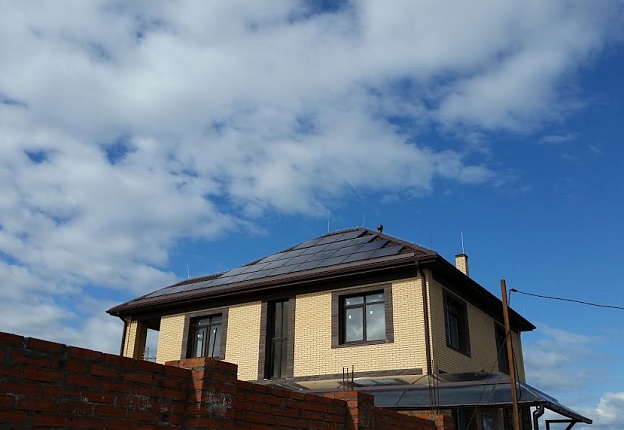The Russian Government is considering the introduction of a net-metering scheme for residential PV installations.
Anton Usachev, President of the Russian Solar Energy Association, told pv magazine that the association is currently in talks with the government to define details of the future scheme, adding that “it’s clear that the connection of rooftop solar for households will finally be enabled.”
Usachev specified that the new scheme should come into effect by the end of this year, and that PV systems installed under the mechanism should sell their electricity surplus to the grid at a wholesale electricity market price of around RUB 1 ($0.0174)/kWh. Usachev believes that the residential segment would receive a strong boost from this scheme, taking into account that without any sort of support around 6 MW of residential PV systems were connected to the Russian grid to date.
Usachev also said he is confident that 2017 will be a record year in terms of new PV installations in Russia. Another 270 MW of solar, in fact, is expected to come online this year, according to him. Until 2022, continues Usachev, new annual additions are expected to range between 250 MW and 300 MW. Most of this new capacity consists of large-scale PV projects tendered by Russian governments over the past years. Overall, 1.54 GW of PV capacity is planned to be installed in the country under the program for large-scale renewable energy projects by 2022.
Russia had reached 540 MW of installed PV capacity at the end of last year. Of this, 60 MW was installed in 2015, while another 70 MW was connected to the grid in 2016. The remaining 400 MW comes from several PV plants located in Crimea, which were seized by local authorities after the region was annexed to Russia in 2014.
According to a report released by the International Renewable Energy Agency (IRENA) last week, Russia has the potential to double its 2030 solar target to 5 GW. The report stressed that stand-alone PV in particular has strong potential in the country’s isolated regions.
According to Usachev, based on energy saving contracts further diesel-solar power systems will be constructed in Siberia and Far East regions. Usachev finds that this segment could grow by between 1 GW and 1.7 GW by 2022, thus enabling Russia to surpass 3 GW of cumulative PV capacity by then.
“Of course, we take oil and gas reserves into account when we speak about renewables, but gas prices on domestic market will be readjusted with indexation so grid parity of renewables in Russia is also an option in a 7-10-year period,” Usachev said.
This content is protected by copyright and may not be reused. If you want to cooperate with us and would like to reuse some of our content, please contact: editors@pv-magazine.com.




1 comment
By submitting this form you agree to pv magazine using your data for the purposes of publishing your comment.
Your personal data will only be disclosed or otherwise transmitted to third parties for the purposes of spam filtering or if this is necessary for technical maintenance of the website. Any other transfer to third parties will not take place unless this is justified on the basis of applicable data protection regulations or if pv magazine is legally obliged to do so.
You may revoke this consent at any time with effect for the future, in which case your personal data will be deleted immediately. Otherwise, your data will be deleted if pv magazine has processed your request or the purpose of data storage is fulfilled.
Further information on data privacy can be found in our Data Protection Policy.